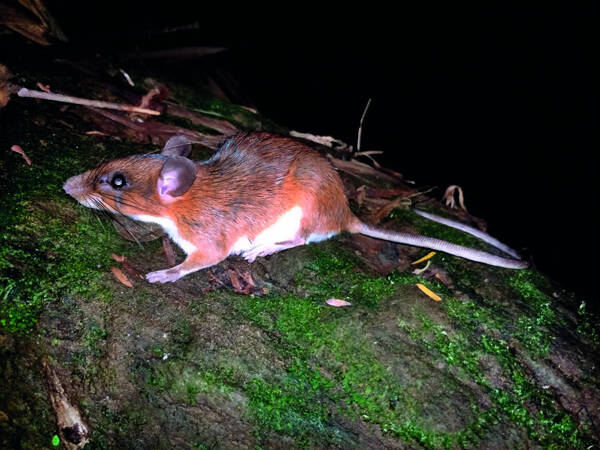Niviventer fulvescens
IUCN
LCBasic Information
Scientific classification
- name:Niviventer fulvescens
- Scientific Name:Niviventer fulvescens,Mountain rat, red rat, spiny yellow rat, yellow-haired jumping rat
- Outline:Rodents
- Family:Rodentia Muridae Rattus
Vital signs
- length:130-170mm
- Weight:
- lifetime:
Feature
The needle-haired mouse is medium-sized, with small round ears, brown or brownish-yellow fur on the back and white fur on the belly.
Distribution and Habitat
It is widely distributed in Shaanxi, Sichuan, Yunnan, Hubei, Hunan, Guizhou, Guangxi, Guangdong, Zhejiang, Hainan, etc. in China, and also in southern Tibet. It is distributed in Pakistan, India, Indonesia, etc. Abroad, it lives in tropical and subtropical forests, hilly mountains, shrubs and valley streams, and chooses understory shrubs, tree roots, rock cracks and mountain farmland as habitats.
Appearance
Smaller than other species of the genus Leucorus. Body length 130-170mm. The back has brownish red fur with many coarse and hard guard hairs. There are many guard hairs in summer and less in winter, but they are still very obvious. The belly is pure white, with a clear distinction between the back and belly. The tail is two-toned, the back is brown, the belly is white, and there is usually a small white section at the end of the tail. The teeth are the same as those of the northern rat.
Details
The needle-haired mouse belongs to the Murinae subfamily. The species-level classification status is stable. The distribution altitude span is narrower than that of the communal mouse, generally not exceeding 1000m, and the vegetation type of the habitat is relatively simple, mainly distributed in broad-leaved forests and occasionally in farmland. Some individuals are inseparable from the northern communal mouse (Niviventer confucianus) in appearance. Their colors are both yellow-brown and they have more needle hairs, but the color of the ventral surface can still distinguish them. The abdomen of the needle-haired mouse is pure white, while the northern communal mouse has a sulfur color, especially after being soaked in formalin, the sulfur color of the abdomen of the northern communal mouse is more obvious.

The needle-haired rat is mainly active at night, but it often goes out during the day when no one is around. It has a wide range of activities, is aggressive and aggressive, is good at climbing and jumping, can move on trees, and jump through branches to find food.
The structure of the burrow system of the echinoderm is relatively complex, with many curved and branched tunnels. It can be divided into single-mouth vertical deep caves, single-mouth horizontal caves, double-mouth vertical deep caves, double-mouth horizontal caves and three-mouth horizontal caves, etc. Most of the tunnels are vertical deep caves. The entrance of the cave is relatively hidden. The cave usually has a nest room, toilet and blind cave. The nesting materials are mostly taken from leaves, bamboo leaves, branches and weeds, and the entrance of the cave is mostly facing southwest.
The needle-eared rat is omnivorous, mainly eating plants, and likes to eat wild fruits, bamboo shoots, tung fruits, tea fruits, chestnuts and hazelnuts. It also often sneaks into the fields to steal rice, wheat, peanuts, berry tomatoes, etc. When food is scarce in winter, it also feeds on wild plant roots, leaves and seedlings.

Under suitable conditions, needle-haired mice can reproduce all year round, with the highest pregnancy rate in June and July. After the Mid-Autumn Festival, the pregnancy rate decreases day by day. Each litter has 1-7 pups, usually 4-6 pups.
Needle-haired mice are a common species of mice in the mountainous forest areas south of the Yangtze River in Anhui, China. In mountain forest areas, its number is second only to that of the community mouse and the Chinese field mouse. For example, in the survey in Huangshan, a total of 243 mice were caught, of which 23 were needle-haired mice, accounting for 9.5%. In the Ningguo Mountains, a total of 103 mice were caught, of which 13 were needle-haired mice, accounting for 12.6%.
Listed in the 2008 Red List of Endangered Species of the World Conservation Union (IUCN) ver 3.1 - Least Concern (LC).








